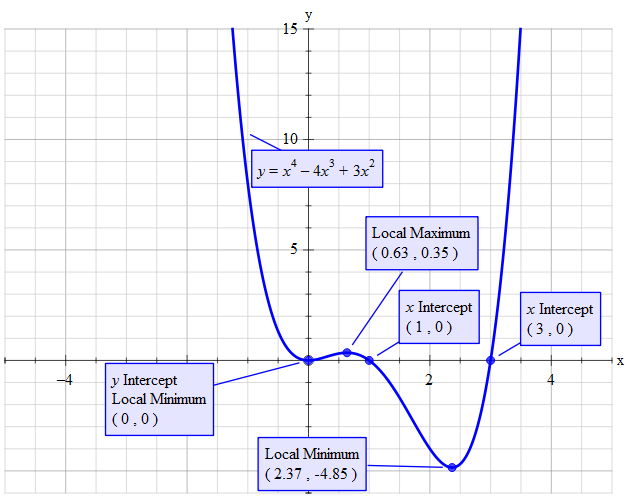How do you find the domain and range of #f(x)=(x^4)-(4x^3)+3x^2#?
1 Answer
Perhaps this question should be in the calculus section.
Domain
I have taken you to a point where you can finish off for the range.
Explanation:

Input comes before you can get any output.
As a memory aid: d for domain comes before r for range so the link is:
input
output
There are no denominators so no 'excluded' values
If you have a variable in the denominator and it has the 'ability' to 'turn' the denominator into 0 then we have a problem.
YOU ARE NOT ALLOWED TO DIVIDE BY 0
Thus the expression/equation becomes 'undefined'.
As the value of
Note that if
Ok that has dealt with the maximums but what about the minimums.
To answer this I am choosing to use calculus.
Set
Then
Set
Solve
The values of
I will let you finish this off.

